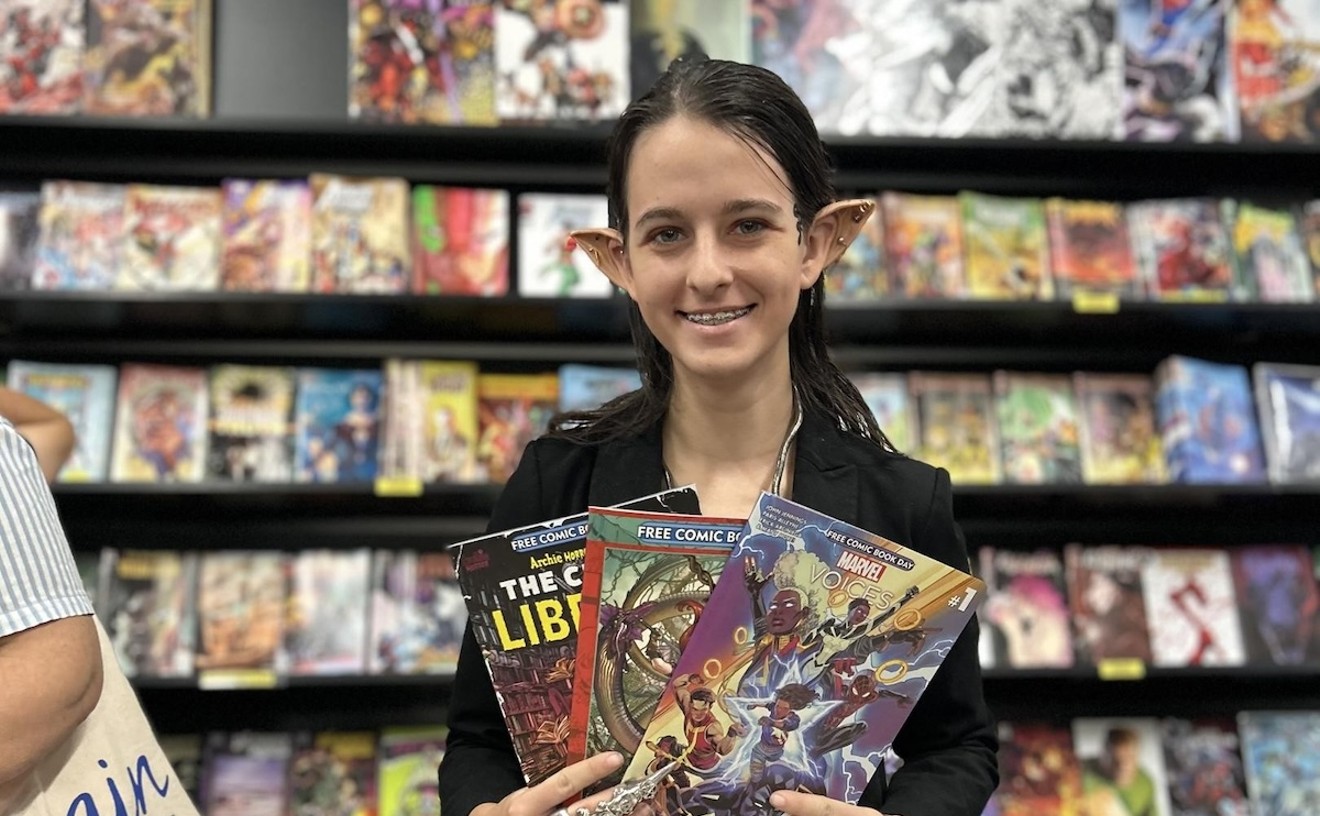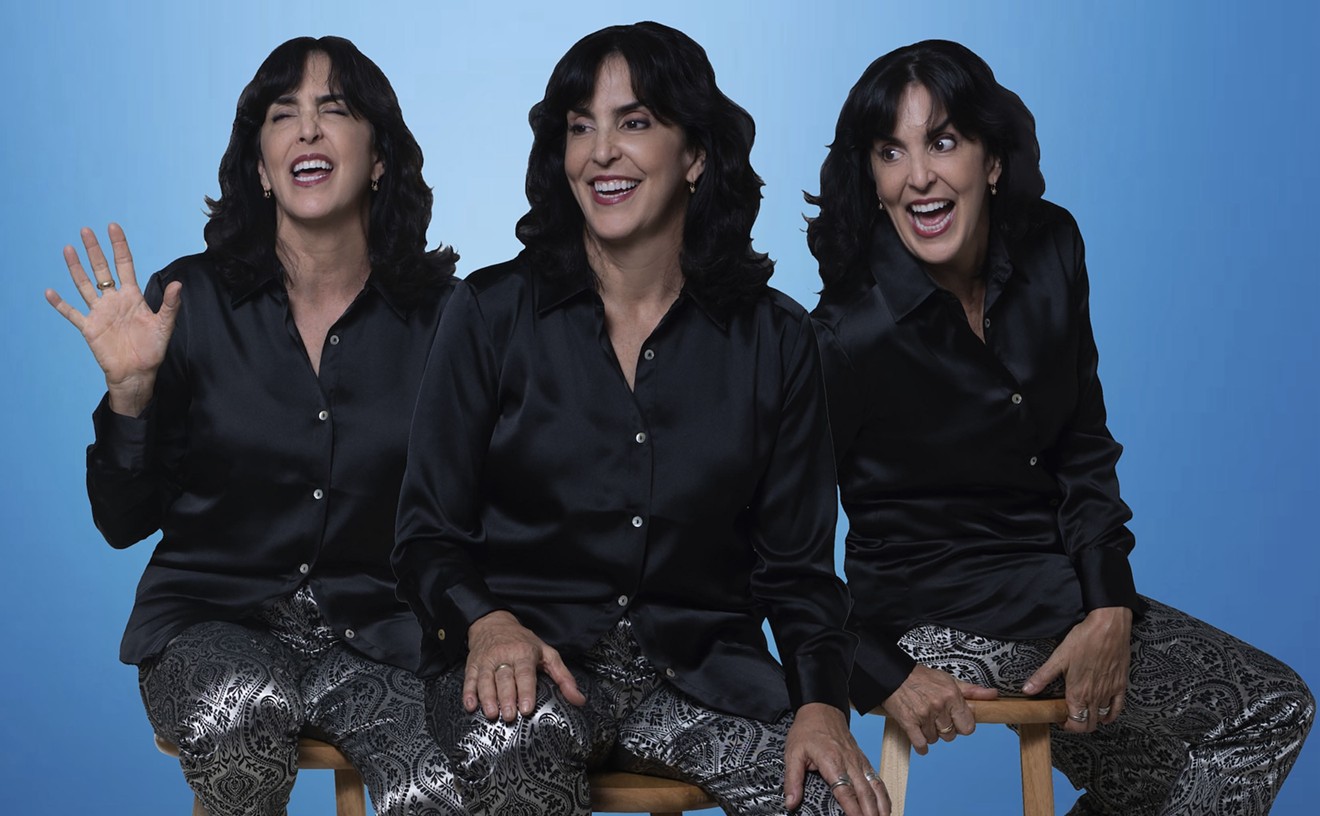In just a few days, more than 670 million roses and other buds will enter the Port of Miami for Valentine's Day. They will make their way to florists and other retailers across the country in one of the busiest weeks for the international flower trade.
It takes about two weeks for a cut flower to travel from farm to retailer to consumer to the garbage dump. This transitory exchange between man and the natural world is not only an example of a global industrial system but also the subject of "BOG-MIA," a sprawling new show by Virginia Poundstone at Locust Projects, where the artist has re-created the trappings of Colombia's booming cut-flower industry.
For nearly a decade, Poundstone, a New York-based sculptor, has explored the economic, historical, and botanical life of flowers. Her show at Locust marks the second installment of an ambitious seven-part investigation of the international flower trade, which Poundstone began in the Valley of the Flowers in the Indian Himalayas.
Following her exhibit here, the 36-year-old plans to visit an international flower auction house in the Netherlands, the nerve center of California's industry, and then a traditional Ikebana master's garden in Japan. After that, she hopes to travel to the flower fields of Kenya and journey with a botanist to the South Pacific to discover new varieties of flowers.
Poundstone says she became interested in art as a young girl growing up in Lexington, Kentucky. Her grandparents inspired her love of modern botany.
"My grandfather was a wildflower photographer," she says. "I grew up looking at his archive of images and identifying wildflowers in the suburbs where I lived and in the Appalachian woods where he spent the summer photographing them."
Poundstone says she spent a little more than a year working on her show at Locust and a week in Colombia last summer conducting field research. The route for flowers between Bogotá and Miami is "a modern-day Silk Road," she says. "I had my eye on Colombia as a site because of its floral production."
During her visit to Colombia, Poundstone learned the first flowers from that country arrived in Miami in the early 1970s. She also discovered that more than 90 percent of the flowers grown in Colombia are exported. Most enter the United States through the Port of Miami.
At Locust's entrance, Poundstone has employed the same plastic mesh used by Colombian flower farmers to create their greenhouse environments. Four of these panels, which rise from floor to ceiling, are emblazoned with a vast field of colorful roses, as is another sweeping canopy that winds overhead, giving spectators the impression they have walked into a massive landscape painting.
Two small video monitors on adjacent walls next to Locust's storefront windows show gardeners tending to seemingly endless rows of blossoms.
In the main gallery, Poundstone's first video installation unspools on two walls. It captures how workers separate the individual cut flowers into bunches of a dozen and box them for export. The videos are accompanied by a cheerful soundtrack of yellow-rubber-apron-clad women chatting while listening to folkloric music. The videos convey both Poundstone's anthropological attention to detail and her fascination with the subject matter.
"I worked as a commercial floral and event designer," she says. "This is how I became aware that flowers make a tremendous global journey to get to New York City. This massive industrial system... blew me away,"
While conducting research for "BOG-MIA," Poundstone discovered a book titled New Structures in Floral Design, written by Frances Bode in 1968. It inspired her geometric wire sculptures, which are displayed atop stacks of colorfully printed cardboard shipping boxes scavenged from a flower importer's warehouse near Miami International Airport.
"Mrs. Bode's goal was to compare how the world of art and the world of flower arranging were similar in their ability to be fluid, dynamic, and revolutionary," Poundstone says. She uses embalmed blooms that are a product of Colombia and sold mostly in Europe and Japan.
"The flowers are harvested at their peak, dehydrated, and then rehydrated with a glycerin-based chemical solution and dye. They are amazing things, exactly half-real and half-fake," she explains. "They are truly magical to see and figure out."










